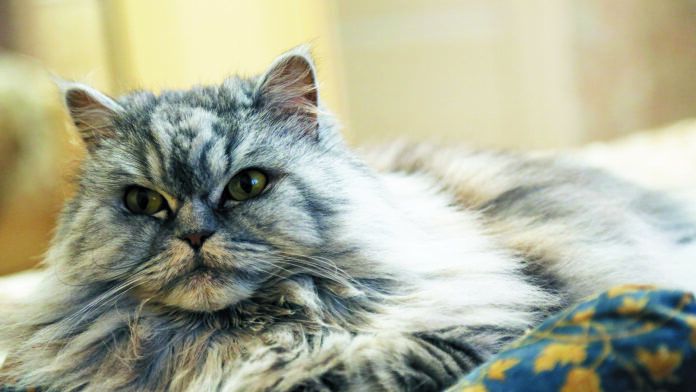The fact that mats mar the sleek, beautiful look of a cat is only a small part of the problem. Mats can also be a dermatological issue. Cats have thin, sensitive skin, and mats can pinch the skin to the point of causing pain — and in some cases hinder movement. That’s because they tend to form in places that are hard for a cat to reach with her tongue for self-grooming — like under the front legs (the armpits). If a mat pulls the skin tight there, it can make walking difficult.
Mats may also cause ulcerations in the skin that increase the pain. If the skin becomes inflamed and irritated enough, an infection can take hold.
If a mat is small — meaning smaller than a nickel — you might be able to take care of it on your own at home. But for anything larger, professional help may be required, either from a groomer or a veterinarian. That’s because you can injure a cat while trying to smooth out a mat. Keep in mind that trying to brush out a mat is like trying to brush out a Brillo pad. It’s not a simple problem.
How mats form
Mats are not simply tangled locks of hair, as they would be for a person. They contain dead hair and an excess of dead skin cells that have sloughed off. Those cells clump together with oils, and mixed with cat hair, form masses that are hard and stubborn.
Cats tend to be somewhat compulsive self-groomers, so they do a lot on their own to keep mats from forming. And they have a lot of equipment to get the job done: a barbed tongue that combs out dead, loose fur; saliva that acts as a cleaning agent; a loofah in the form of front paws that clean around the face and ears; tiny front teeth (incisors) that tease out tangles and remove debris; and a wide-tooth comb in the form of back paws. But because cats can’t reach all spots equally well, and because age and diseases like arthritis make it harder for many cats to twist and turn as needed for thorough self-grooming, sometimes nature gets out in front of feline fastidiousness.
Grooming by you goes a long way to fill in any gaps, and regular brushing is particularly important if you have a long-haired cat. But not all cats take to brushing, so some people back off from trying to gradually adjust their pets to it with short sessions and treats for compliance. Sometimes, even people who do groom their cats fall behind, and mats take hold.
Which mats to tackle on your own
A mat is not going to magically disappear. You have to deal with it. If it’s the size of a coin or smaller, you might be able to get it out with a metal comb that is about 6 to 8 inches long. The teeth of a very small comb or a flea comb are too close together to take apart the mat without painfully pulling out too much hair at the same time. And a brush just won’t get the job done. It would be like trying to brush out steel wool.
The aim is to get the comb completely under the mat without gathering any hairs around it, hold the skin by the mat firmly with your other hand (if the skin moves, the mat won’t come out), and give one swift tug. It’s kind of like ripping off a Band-Aid rather than pulling it slowly and drawing out the pain.
But even if the mat is small and you have the right comb, if it’s really tight or in a sensitive spot (imagine someone trying to pull out a mat near your groin or your armpit), you will want to clip the spot instead. For that, the safest bet is to go to either a professional groomer or your veterinarian. Ditto for any larger mats. It’s all too easy to nick the skin while shaving with an electric clipper, and the heat from the clipper could burn the skin. A groomer or vet will have the professional-grade clipper required to do the job safely.
You can do a lot to keep it from ever getting that far, however. Check your cat frequently for irregularities in her coat. If you see a mat forming, take care of it before it gets out of hand.





Why can’t I get the article on mats? It says to sign in; I signed in. Still can’t read the rest of the article—and I have an old cat that came to me loaded with mats!